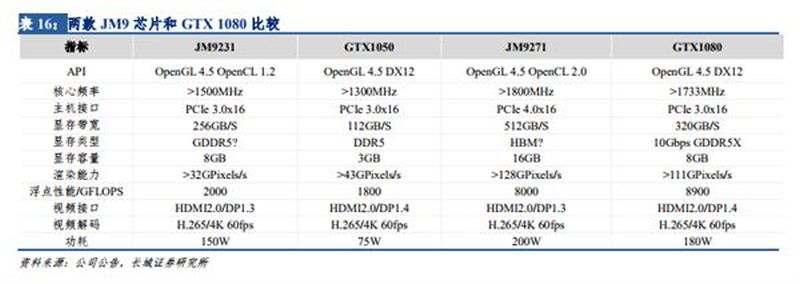The card in question is reportedly still in development, but there is some information over its projected specification. Firstly, the card will officially be known as the Jingjia JM9271, and that it will be based on a 28nm die lithography. That’s relatively large in comparison to the GTX 1080’s process node, which is based on NVIDIA’s 16nm process node. The die size notwithstanding, the JM9271 will support the OpenGL 4.5 API, but not DirectX 12. Additional specification also hints at the JM9271 card having clockspeeds in excess of 1800MHz, and running on 16GB of HBM, instead of NVIDIA’s own GDDR5X memory standard. Where the JM9721 seems to surpass the GTX 1080 is with its memory bandwidth and interface. The card will have a bandwidth of 512GB/s versus the GTX 1080’s 320GB/s. Further, the card seems poised to use the new PCIe 4.0 interface instead of PCIe 3.0. If the latter is true, then it would make it the second GPU manufacturer to make use of the new interface after the AMD Radeon RX 5700 series. At the moment, Jingjia isn’t providing a specific launch date for the JM9721, neither has it mention whether it intends to circulate it in a consumer market outside of China. Having said that, just circulating it within the Chinese market would still be enough for the company to turn a profit and give both NVIDIA and AMD a run for their money. (Source: cnBeta via PCGamesN)
